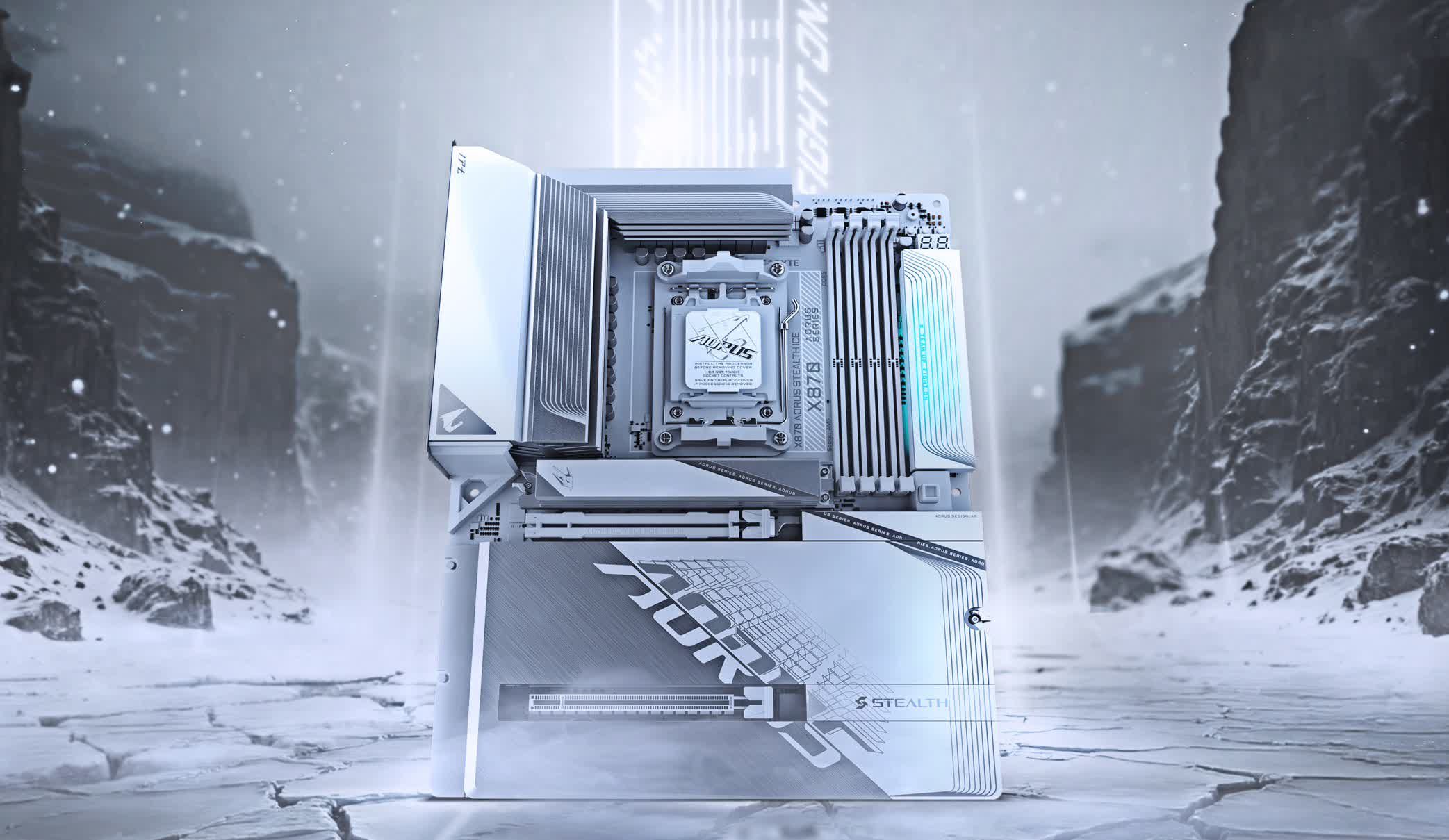What just happened? Gigabyte has introduced the Aorus Stealth Ice X870 and B850 motherboards with a practical innovation: M.2 EZ-Flex. This new simplistic thermal solution could significantly enhance SSD performance and longevity by improving heat management.

Gigabyte is no stranger to ambitious motherboard designs, but its latest move leans practical. Last week, the company launched the Aorus Stealth Ice X870 and B850 motherboards, introducing a clever new thermal solution called M.2 EZ-Flex – a feature that could substantially improve SSD performance and longevity.
At the core of the design is a flexible, spring-loaded backplate paired with pressurized thermal pads that adapt to single- and double-sided M.2 SSDs. Traditional heatsinks often struggle to make solid contact with both sides of a drive – especially double-sided models – leading to uneven heat dissipation. Gigabyte's EZ-Flex applies consistent pressure and improves thermal conductivity across the entire drive, claiming temperature drops of up to 12°C.
That level of improvement matters – thermal throttling can severely impact real-world performance when M.2 drives overheat under sustained load. EZ-Flex ensures better contact between the heatsink, the NAND, and the controller, helping maintain consistent high-speed transfers.
gigabyte introduces a new ez design called M.2 EZ-Flex on the latest aorus stealth ice series mobos.
– UNIKO's Hardware 🌏 (@unikoshardware) May 9, 2025
it seems gigabyte has revised the mounting design of the ssd backplate, adding springs? under the backplate to help make perfect contact for the ssd and the top heatsink.
I think… pic.twitter.com/eBB9JVyKY0
The growing thermal challenges of newer PCIe Gen5 SSDs are especially relevant as they push performance and thermal boundaries along with them. Some reports suggest that PCIe 5.0 SSDs may require active cooling to prevent performance throttling from excessive heat. Gigabyte is aware of this trend, having already paired some of its high-performance Gen5 SSDs with massive passive heatsinks.
What's especially notable is that this isn't limited to Gigabyte's flagship X870. The more mainstream B850 Aorus Stealth Ice also includes EZ-Flex, suggesting that Gigabyte may plan to roll this out across more models. It makes sense, given the design's simplicity – a pair of springs and better thermal pads.
Beyond thermals, the Aorus Stealth Ice lineup boasts the high-end specs you'd expect in 2025: PCIe Gen5 support, Wi-Fi 7, 5G LAN, tool-free M.2 slots, and even a BIOS-integrated Wi-Fi driver. It also features X3D Turbo Mode for easy Ryzen optimization and D5 Bionic Corsa for hands-free DDR5 overclocking.
New Gigabyte motherboards use pressurized thermal pads to cool hot-running SSDs by up to 12°C